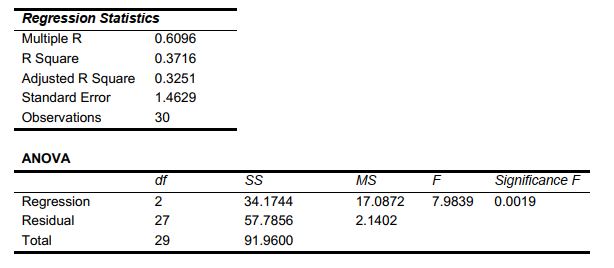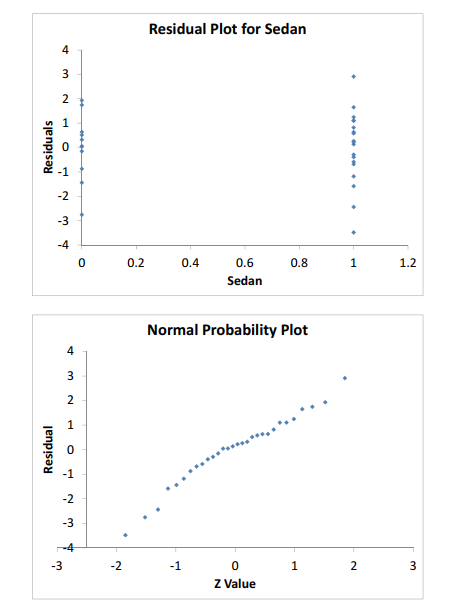SCENARIO 14-16 What are the factors that determine the acceleration time (in sec.) from 0 to 60 miles per hour of a car? Data on the following variables for 30 different vehicle models were collected: Y (Accel Time): Acceleration time in sec. X₁ (Engine Size): c.c. X₂(Sedan): 1 if the vehicle model is a sedan and 0 otherwise The regression results using acceleration time as the dependent variable and the remaining variables as the independent variables are presented below. 
 The various residual plots are as shown below.
The various residual plots are as shown below. 
 The coefficient of partial determinations
The coefficient of partial determinations  are 0.3301 and 0.0594 respectively. The coefficient of determination for the regression model using each of the 2 independent variables as the dependent variable and the other independent variable as independent variables
are 0.3301 and 0.0594 respectively. The coefficient of determination for the regression model using each of the 2 independent variables as the dependent variable and the other independent variable as independent variables  are, respectively, 0.0077 and 0.0077.
are, respectively, 0.0077 and 0.0077.
-Referring to Scenario 14-16, what is the p-value of the test statistic to determine whether engine size makes a significant contribution to the regression model in the presence of the other independent variable at a 5% level of significance?
Definitions:
Excessive Ultraviolet Radiation
Overexposure to UV rays from the sun or artificial sources, which can lead to skin damage and increased risk of skin cancer.
Ultraviolet Radiation
A form of energy emitted by the sun, invisible to the naked eye, which can have harmful effects on human skin and eyes but is essential for the synthesis of vitamin D.
Earth
The third planet from the Sun, characterized by its vast oceans, diverse ecosystems, and the presence of life, including human civilization.
Fish Species
Various types of fish differentiated by genetic, morphological, and ecological characteristics, comprising a significant portion of aquatic biodiversity.
Q37: Referring to Scenario 15-1, what is the
Q89: You have just computed a regression model
Q93: Referring to Scenario 12-7, the critical value
Q96: Referring to Scenario 15-7-A, what is your
Q130: Referring to Scenario 15-7-B, the variable X3
Q180: Referring to Scenario 13-13, the regression mean
Q182: Referring to Scenario 14-5, which of the
Q190: Referring to Scenario 13-4, the coefficient of
Q201: Referring to Scenario 14-20-A, what is
Q266: A regression had the following results: SST